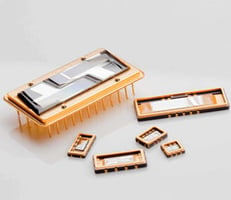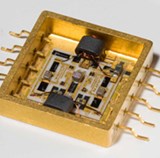APITech has been part of many seminal space journeys into deep space, from the Galileo spacecraft that studied Jupiter and its moons to the Cassini-Huygens space research mission that studied Saturn and its rings and natural satellites.

Now APITech will be part of NASA's Orion spacecraft that is being built for a new era of human deep space exploration. Orion will carry astronauts to the Moon as a cornerstone of the Artemis program and on to Mars for many decades to come.
APITech has more than 40 years of space program experience that includes deep space, scientific missions, and space communications. With the Orion spacecraft, APITech will be supplying SAW filters and low-noise amplifiers for communications and guidance systems that encompasses all global satellite positioning systems.
APITech’s Class H & K manufacturing facilities deliver space screened and qualified solutions designed for the harsh environment of space. Many standard radio frequency (RF) components can be qualified to space, meaning customers have access to space-approved standard designs as well as custom, radiation-hardened solutions designed to withstand the most extreme environments.
A respected industry leader, APITech is able to support customers on any level, from components to subsystem solutions. With space manufacturing centers in the United States and United Kingdom, APITech offers a wide range of specialized space and hi-reliability certifications and testing capabilities. These facilities also offer a wide range of in-house mechanical and environmental screening and auto-electrical testing for element evaluation as well as completed product qualification.
Below are some of the products that are part of APITech’s space portfolio:
 Low Noise, Small Signal Hybrid Amplifiers
Low Noise, Small Signal Hybrid Amplifiers
- Broadband performance, frequencies from 1 MHz to 6 GHz.
- Low Noise as low as 1 dB.
- Output power to 1 watt.
- Customizable Designs to meet customer specific performance requirements.
- Manufactured in a Class H & K facility
- Tested to MIL PRF 38534 Class H and Class K Screening Standards.
- In frequencies of 20 MHz to 2600 MHz
- Loss less than 2 dB
- Fractional bandwidths from 0.04 to 60 percent
- Shape factors below 1.10:1
- Hermetically sealed packages
- Low phase noise performance to -124 dBc/Hz at 1 kHz offset
- High stability of less than 10 ppm/year
- Hermetically sealed
- Rugged design for space and military markets.
 Voltage Controlled Oscillators
Voltage Controlled Oscillators
- Superior communication distances for frequencies of 350 MHz to 4 GHz
- Low Phase Noise: -109 dBc/Hz at 1 kHz
- Low Vibrations Sensitivity: 2 x 10-9 per g
- Hermetic Kovar Package: 1.0" x 1.0" x .2" SMT
- Operating Range: -55°C to +100°C
- Ruggedized Hybrid Construction
- Manufactured in a Class H & K facility
- Tested to MIL-STD-883 and MIL-STD-202
Learn More
To learn more, contact our engineers to discuss your space and requirements today:
.jpg)

 News Blog
News Blog
 SAW Oscillators
SAW Oscillators


Let Us Know What You Thought about this Post.
Put your Comment Below.